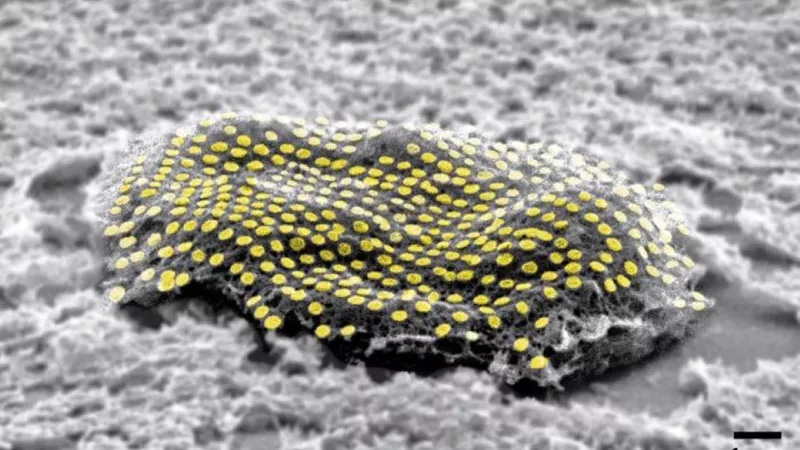
Unraveling the ADHD Brain
Attention Deficit Hyperactivity Disorder (ADHD) is a neurodevelopmental disorder affecting millions worldwide. It is characterized by symptoms such as impulsivity, hyperactivity, and difficulty paying attention, which can significantly impact an individual’s daily life.
While the exact cause of ADHD is not fully understood, it is widely believed to have a strong neurobiological basis. Genetics play a substantial role in the development of ADHD, with the disorder often running in families. Studies have found some differences in the brain structure of individuals with ADHD compared to those without the disorder. Additionally, there are other potential factors that may contribute to ADHD, such as being born prematurely (prior to 37 weeks of gestation), having a low birth weight, or exposure to alcohol, drugs, or smoking during pregnancy. While ADHD can affect people of all intellectual abilities, it is more frequently seen in those with learning challenges, according to NHS.
Environmental factors and brain injuries may also contribute to the condition, according to the National Institute of Mental Health.
Interestingly, individuals with ADHD often exhibit differences in specific brain regions responsible for attention, impulse control, and executive functioning, which may be smaller or less active than those without the disorder. This scientific understanding helps dispel the myth that ADHD is simply an excuse for bad behavior. Instead, it reinforces the fact that ADHD is a recognized medical condition that requires proper diagnosis and treatment.
Spotting the Signs
There are three types of ADHD - inattention, hyperactivity-impulsivity, or a mix of both. Identifying ADHD can be challenging, as there are 18 core symptoms according to ADDitude. Half of these relate to inattention, such as difficulty following instructions or staying focused, while the other half relates to hyperactivity and impulsivity, such as fidgeting and interrupting others.
It is important to note that children with inattentive symptoms may not be immediately identified as having ADHD, as they may appear quiet in the classroom. This can also be the case for girls with ADHD, who may not exhibit disruptive behavior and thus may not be referred for evaluation and treatment.
Inattention:
-
Fails to pay close attention to details or makes careless mistakes in schoolwork, work, or other activities.
-
Has difficulty sustaining attention in tasks or play activities.
-
Does not seem to listen when spoken to directly.
-
Does not follow instructions and fails to finish schoolwork, chores, or duties in the workplace (not due to oppositional defiant disorder or failure to understand instructions).
-
Has difficulty organizing tasks and activities.
-
Avoids, dislikes, or is reluctant to engage in tasks that require sustained mental effort (such as schoolwork or homework).
-
Loses things necessary for tasks or activities (e.g., toys, school assignments, pencils, books, or tools).
-
Easily distracted by extraneous stimuli.
-
Forgetful in daily activities.
Hyperactivity and Impulsivity:
- Fidgets with or taps hands or feet or squirms in their seat.
- Leaves seat in the classroom or in other situations in which remaining seated is expected.
- Runs about or climbs excessively in situations where it is inappropriate (may be limited to subjective feelings of restlessness in adults).
- Has difficulty playing or engaging in leisure activities quietly.
- Appears “on the go,” acting as if “driven by a motor.”
- Talks excessively.
- Blurts out an answer before a question has been completed.
- Has difficulty waiting for their turn.
- Interrupts or intrudes on others (e.g., butts into conversations, games).
Clearing Up Myths
There are a lot of mistaken ideas about ADHD. Here are some facts about this condition:
- ADHD is a real disorder with a neurological basis and is not caused by bad parenting. It’s a neurobiological condition.
- ADHD affects both genders, not just hyperactive boys.
- Individuals with ADHD are not lazy or unintelligent.
- People with ADHD can hyperfocus on tasks they find interesting.
- ADHD medication, when properly managed, does not lead to substance abuse.
- Symptoms of ADHD most likely continue into adulthood.
- Diet does not cause ADHD, but certain foods may exacerbate symptoms.
- While there are concerns about overdiagnosis, many individuals remain undiagnosed and untreated
By debunking these misconceptions, we can promote a better understanding of ADHD, leading to more support and empathy for those with this condition.
ADHD is a complex, multifaceted disorder. ADHD treatment typically involves a combination of medication, psychotherapy, education, and behavioral interventions. However, with the proper knowledge, understanding, and resources, those with ADHD can manage their symptoms and thrive in their personal and professional lives.
Although it can be challenging to manage, many have turned their high energy, creativity, and hyperfocus into assets in fields like entrepreneurship, art, and technology.
My mind moves at a mile a minute. It’s like if my creativity is on a roll, I just let it flow.
Justin Timberlake






